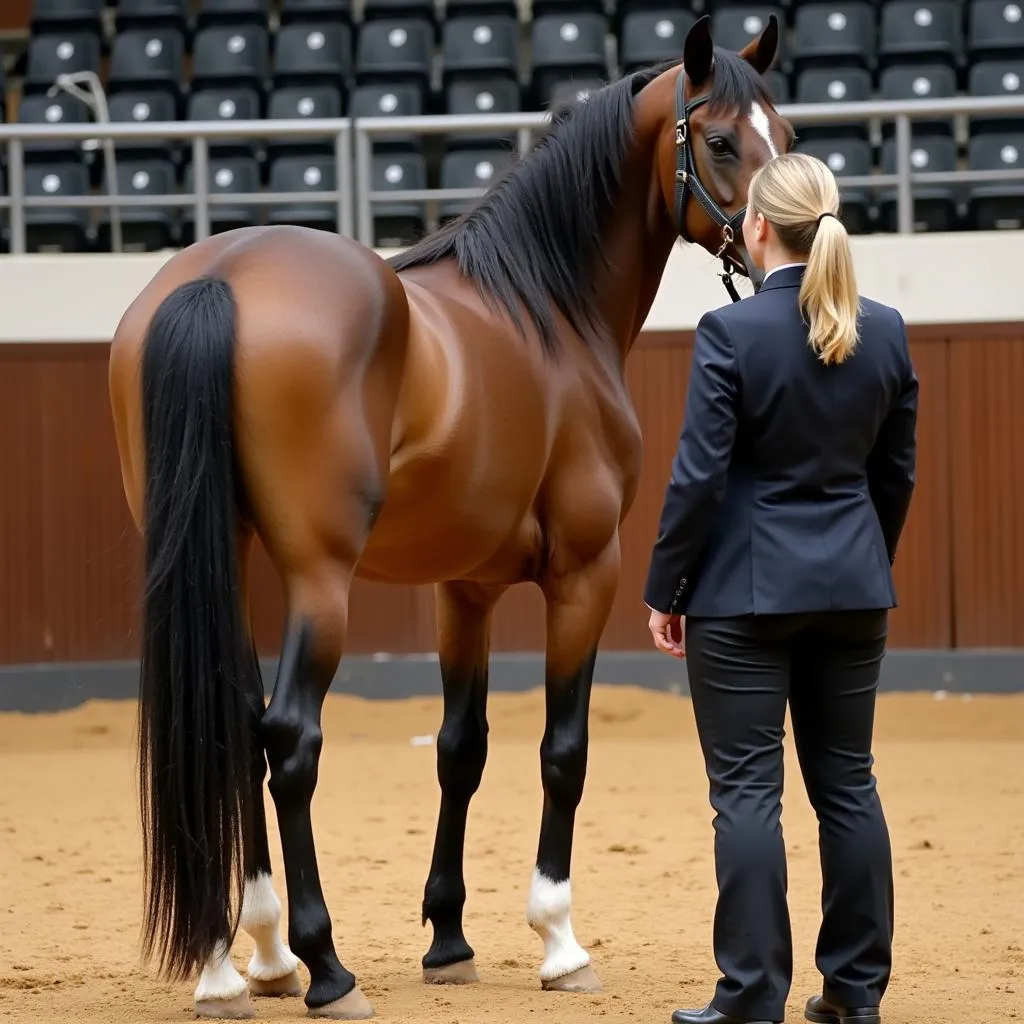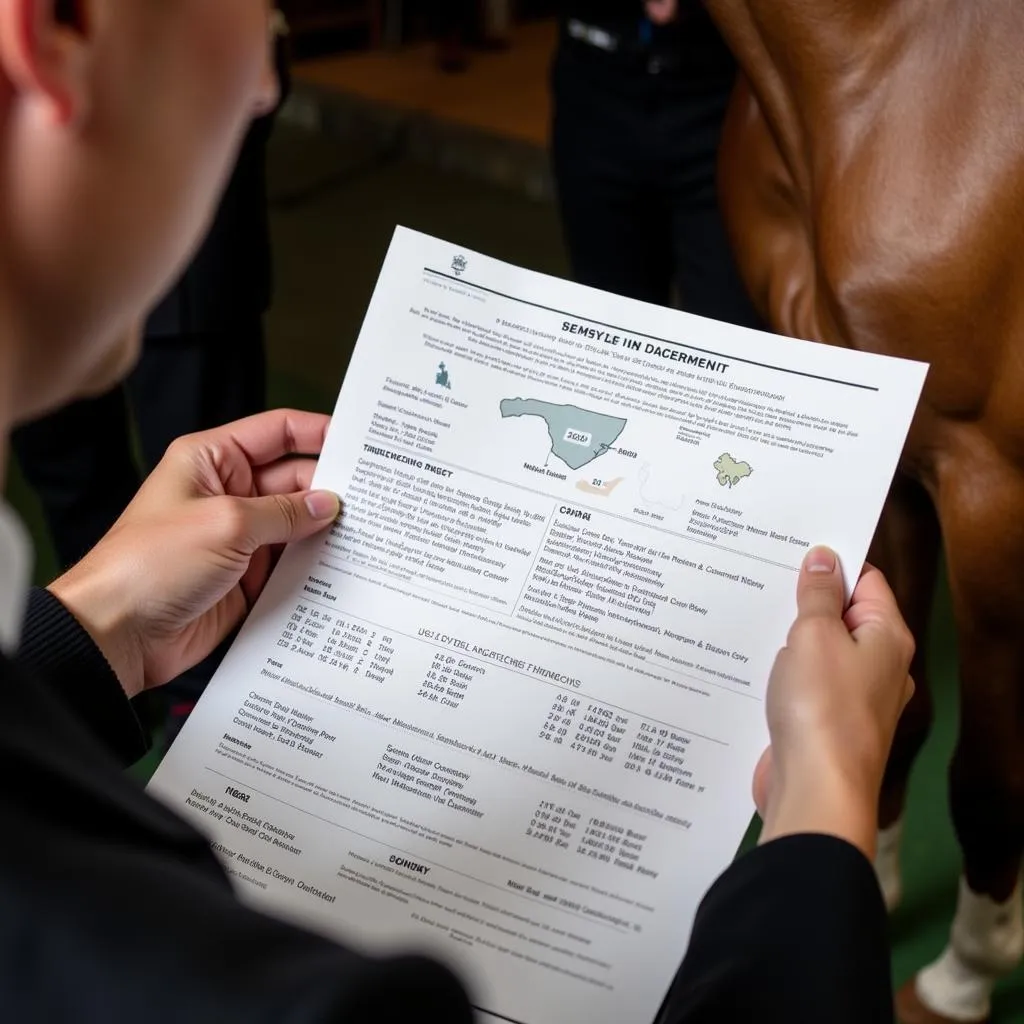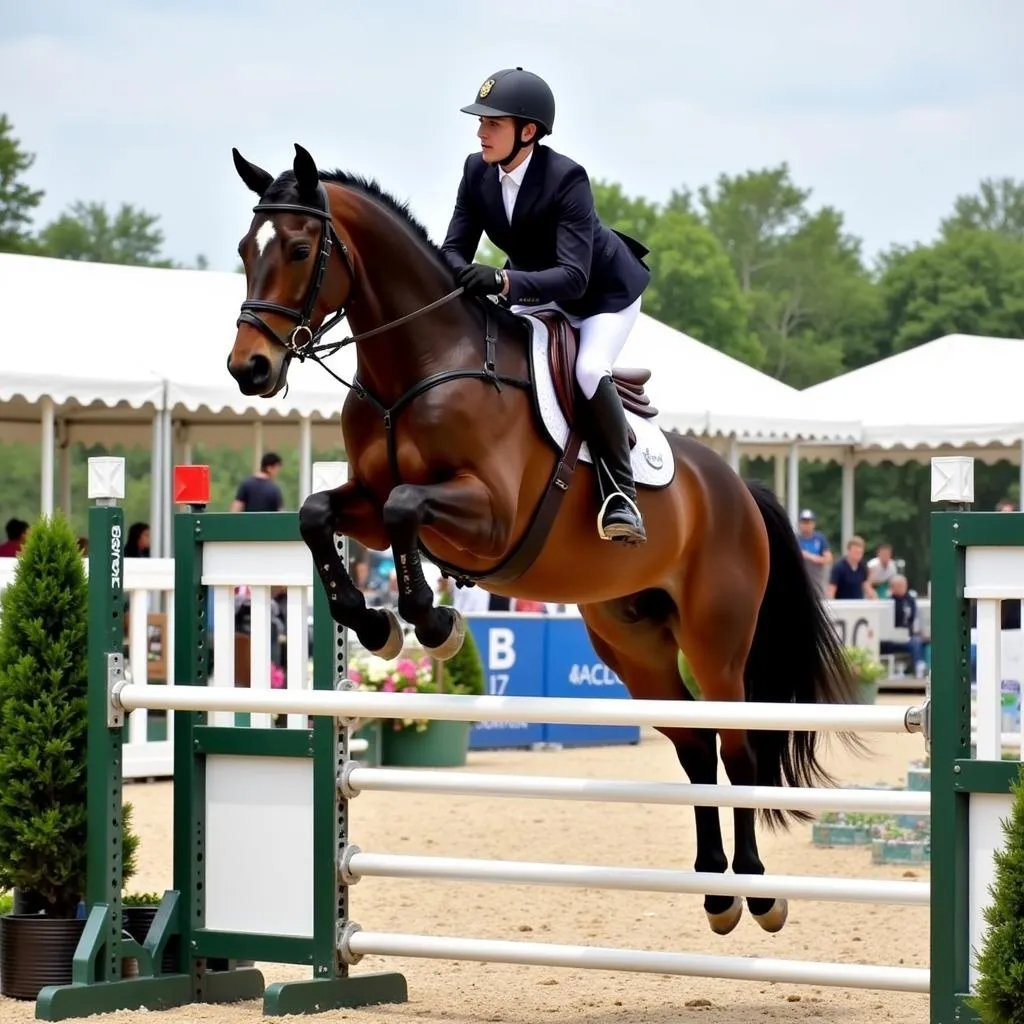The Keuring Horse inspection is a cornerstone tradition in the world of Dutch Warmblood breeding, renowned for its meticulous evaluation process designed to uphold the breed’s esteemed standards. This comprehensive guide delves deep into the nuances of the keuring horse, exploring its historical significance, the rigorous inspection process, and the impact it has on breeders and enthusiasts alike.
Unveiling the History and Significance of Keuring
The keuring tradition originated in the Netherlands as a way to assess and improve the quality of working horses essential for agriculture and transportation. Over time, this practice evolved into a standardized system used to evaluate breeding stock, specifically for the versatile Dutch Warmblood breed. The term “keuring” itself translates to “inspection” in Dutch, reflecting the meticulous nature of this evaluation process.
The keuring serves multiple purposes. Primarily, it acts as a rigorous quality control mechanism, ensuring that only horses meeting the breed’s stringent standards for conformation, movement, and temperament are approved for breeding. This meticulous selection process is instrumental in maintaining the Dutch Warmblood’s reputation for athleticism, trainability, and exceptional temperament.
Beyond breeding approval, the keuring provides valuable feedback to breeders on their horses’ strengths and weaknesses. This invaluable insight helps guide breeding decisions, enabling breeders to continually improve the quality of their stock.
Navigating the Keuring Horse Inspection
The keuring inspection is a comprehensive evaluation process that leaves no stone unturned. Typically conducted by experienced judges certified by the Royal Dutch Horse Studbook (KWPN), the inspection assesses various aspects of the horse, including:
1. Conformation and Movement
Judges meticulously examine the horse’s conformation, evaluating its overall balance, structural correctness, and suitability for its intended discipline. Horses are presented both in-hand and free-moving at a trot to assess their gaits for purity, elasticity, and overall athleticism.
 Keuring Horse Conformation Assessment
Keuring Horse Conformation Assessment
2. Temperament and Character
The keuring goes beyond physical attributes, placing significant emphasis on temperament. Judges observe the horse’s demeanor throughout the inspection, looking for a willing attitude, trainability, and a calm, balanced temperament crucial for a reliable performance horse.
3. Pedigree and Lineage
A horse’s pedigree plays a vital role in the keuring. Judges consider the performance records and keuring results of the horse’s ancestors to assess its genetic potential and predict the likelihood of passing on desirable traits.
 Keuring Horse Pedigree Analysis
Keuring Horse Pedigree Analysis
The Significance of Keuring Results
Following the inspection, horses receive scores and feedback based on their performance in each category. These results carry significant weight within the breeding world and greatly influence a horse’s future prospects. High-scoring horses often command premium prices as breeding stock and have successful careers in their chosen disciplines.
Different Levels of Keuring
Depending on the age and intended purpose of the horse, there are different levels of keuring, each with specific criteria and objectives. Some common types include:
- Foal Keuring: This inspection evaluates young foals for their potential as future breeding stock, focusing on conformation, movement, and pedigree.
- Mare Performance Test: This rigorous test assesses mares for their suitability as broodmares, evaluating their riding qualities, trainability, and performance in specific disciplines.
- Stallion Selection: This highly competitive process identifies stallions with exceptional qualities to be approved for breeding. Stallions undergo rigorous performance testing and health examinations before being considered.
The Keuring Horse: Beyond Breeding
The influence of the keuring extends far beyond the realm of breeding. The rigorous standards upheld through this tradition have contributed significantly to the Dutch Warmblood’s reputation as a top sport horse breed worldwide. The emphasis on temperament, athleticism, and trainability consistently produces horses that excel in various disciplines, from dressage and show jumping to eventing and driving.
 Keuring Horse Show Jumping
Keuring Horse Show Jumping
Conclusion
The keuring horse inspection is a testament to the dedication and meticulousness of Dutch Warmblood breeders in preserving and enhancing the breed’s exceptional qualities. By upholding stringent standards for conformation, movement, temperament, and pedigree, the keuring ensures that the legacy of the Dutch Warmblood as a versatile, talented, and reliable equine partner continues to thrive. Whether you’re a seasoned breeder or an enthusiastic equestrian, understanding the keuring horse provides invaluable insight into the world of equine excellence.
FAQs about Keuring Horses
1. What is the main purpose of a keuring horse inspection?
The primary purpose of a keuring is to assess the quality of horses, particularly for breeding approval, ensuring they meet breed standards and contribute to the overall improvement of the breed.
2. Who conducts a keuring inspection?
Keuring inspections are typically conducted by highly experienced judges certified by organizations like the Royal Dutch Horse Studbook (KWPN).
3. What factors are considered during a keuring horse inspection?
The keuring evaluates a horse’s conformation, movement, temperament, pedigree, and overall health. The specific criteria may vary depending on the type of keuring and the horse’s age and intended purpose.
4. Do all horses pass the keuring inspection?
No, not all horses pass the keuring. Only horses that meet the specific breed standards and pass the evaluation criteria are approved for breeding or receive favorable scores.
5. What happens if a horse doesn’t pass the keuring?
If a horse doesn’t pass the keuring, it may not be eligible for breeding approval. However, the feedback provided during the inspection can be valuable for breeders to make informed decisions about their breeding program or the horse’s future career path.
6. Is the keuring only for Dutch Warmbloods?
While the keuring originated with Dutch Warmbloods, other breed organizations have adopted similar inspection processes to maintain breed standards and guide breeding programs.
7. How can I find out more about keuring events and results?
Information about keuring events, schedules, and results can often be found on breed association websites, equestrian publications, or by contacting breed registries directly.
Need Help? Contact Justus Horses USA Today!
For all your equine needs, including guidance on keuring preparation or finding your next champion, contact Justus Horses USA at Phone Number: 0772127271, Email: [email protected]. You can also visit us at QGM2+WX2, Vị Trung, Vị Thuỷ, Hậu Giang, Vietnam. We have a dedicated customer support team available 24/7.